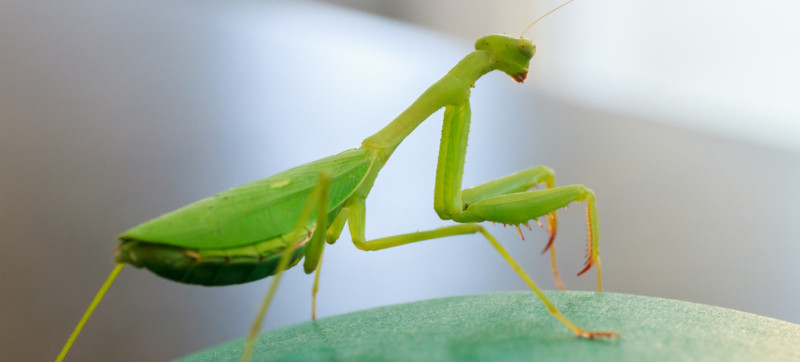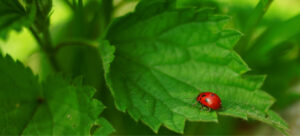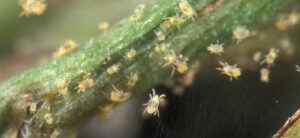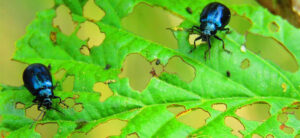
What Are Beneficial Insects?
Beneficial insects are a gardener’s best friend, serving as natural pest control agents that help manage harmful insect populations. These insects fall into two main categories: parasitic insects and predatory insects. Understanding the differences between these groups and their roles in pest management can help you maintain a healthy, thriving garden.
Parasitic Insects vs. Predatory Insects
Parasitic Insects: Parasitic insects lay their eggs on or inside other insects (hosts). The developing larvae feed on the host, eventually killing it. This process makes parasitic insects excellent biological control agents for specific pests.
Predatory Insects: Predatory insects hunt and feed on other insects, often consuming many prey over their lifetime. These generalist feeders can control a wide range of garden pests, making them versatile allies in pest management.
Beneficial Parasitic Insects & How They Help
Parasitic Wasps
Parasitic wasps are small, often less than half an inch long, and non-stinging. They are known for their parasitic behavior, laying eggs on or inside host insects.
Common Types
- Trichogramma Wasps (Trichogramma spp.): These wasps are tiny and target the eggs of over 200 pest species, including caterpillars and moths.
- Braconid Wasps (Braconidae family): These wasps parasitize caterpillars, aphids, and beetles.
- Aphipar (Aphidius Colemani): Great for control of aphids in greenhouses and outdoor growing.
- Greenfly (Aphidius Ervi): Perfect for larger bodied aphids.
- Red Scale Parasite (Aphytis Melinus): These tiny wasps attack several types of scale.
- Leafminer Parasitoid (Diglyphus Isaea): These small wasps parasitize leafminer larvae.
- Aphilin (Aphelinus Abdominalis): Aplilin lay eggs in aphids, they also eat ones they don't parasitize.
- Encarsia (Encarsia Formosa): Common commercial control of whiteflies in greenhouse crops.
Parasitic Wasps Overview
Lifespan: A few weeks to several months, depending on species and conditions.
Growing Conditions:
- Temperature: Prefer moderate temperatures.
- Humidity: Moderate levels are ideal.
- Host Availability: Need suitable hosts (e.g., caterpillars, aphids) to reproduce.
- Floral Resources: Adults feed on nectar and pollen.
Habitat:
- Gardens and farms, Forests and woodlands, Grasslands and meadows, Urban areas
Control Targets:
- Caterpillars (moths, butterflies), Aphids, Beetle larvae, Scale insects, Whiteflies, Leaf miners
Parasitic wasps are essential biocontrol agents, naturally managing various pest populations.
Beneficial Nematodes
These nematodes are microscopic, non-segmented worms found in the soil. They feed on different insects by parasitism.
Some nematodes can locate their host because of the heat and carbon dioxide they released. They enter the host pests body through different openings or can directly pierce through their skin surface.
Once inside the pest, they release bacteria that can kill the insect within 24-48 hours. Beneficial nematodes work best to control pests when the pests are in their early stages.
Common Types
- Steinernema Carpocapsae: This generalist has been effectively used to control a variety of insects.
- Heterorhabditis Bacteriophora: The perfect choice when your problems concern all types of grubs & beetles.
- Steinernema Riobrave: Heat tolerant and perfect for temperatures above 35°C.
- Steinernema Feltiae: Used against fungus gnat larvae and western flower thrips pupae.
- Heterorhabdtitis Indica: This heat tolerant nematode works best between 25°C and 29°C.
Beneficial Nematodes Overview
Control for: weevils, fleas, leaf and stem borers, caterpillars, armyworms, fly larvae, fungus gnats, ticks, thrips, leaf miners, root maggots and other insect pests.
Growing conditions: These bugs cannot withstand extreme temperatures or UV light, so they do best indoors under traditional grow lights. Keep the soil moist.
Habitat: They live in moist soil, especially near the root systems of the plants.
Beneficial Predatory Insects & How They Help

Ladybugs
The most notorious beneficial bug is the ladybug. Its reputation for helping growers take control of their grow is well deserved, as they can feast on a variety of insects rapidly.
They do great against aphids, as they are capable of feeding on up to 60 per day, and up to 5,000 over the course of their life!
Ladybugs, also known as lady beetles, are small, dome-shaped beetles with distinctive red, orange, or yellow bodies adorned with black spots.
Ladybugs are a great preventative measure against pests, but when used preventatively, you need to be careful about the quantity you set loose. Try only releasing a couple of ladybugs per square foot of growing space.
Common Types
- Seven-Spotted Ladybug (Coccinella septempunctata): One of the most common ladybug, this bug is perfect for aphids and scale insects.
- Convergent Ladybug (Hippodamia convergens): Another of the most common ladybugs, they will feed on pollen when there are no other prey around.
- The Lesser Mite Destroyer (Stethorus Punctilum): Great for high temperature spidermite control.
- Mealybug Destroyer (Cryptolaemus Montrouzieri): This lady beetle specializes in mealybug control.
- Whitefly Predatory Lady Beetle (Delphastus Catalinae): This whitefly predator is tiny yet ferocious and loves tropical environments.
- Singular Black Lady Beetle (Lindorus Lophanthae): These fuzzy little lady beetles are great for scale control.
Ladybug Overview
Control for: Aphids, whiteflies, mites, weevils, adelgids and other beetle larvae
Growing conditions: Ladybugs prefer moist, humid conditions, so keep soil damp and humidity high.
Lifespan: Ladybugs have a much longer lifespan than many of the other bugs on this list, living between 2-3 years on average.
Habitat: These bugs live in a very broad range of habitats, including forests, fields, grasslands, gardens, and more.
Assassin Bugs
Assassin bugs are robust predators with elongated bodies and a distinctive curved beak used for piercing and sucking the fluids from their prey.
Common Types
- Wheel Bug (Arilus cristatus): This mechanical looking insect is commonly used for pest control.
- Milkweed Assassin Bug (Zelus longipes): These generalists are great for multiple species of pests.
Bad Bugs Controlled
Assassin bugs prey on caterpillars, beetles, aphids, and other soft-bodied insects.
Praying Mantids

Praying mantids are large insects with triangular heads, bulging eyes, and elongated bodies. Their front legs are adapted for grasping and holding prey.
Common Types
- Carolina Mantis (Stagmomantis carolina): This is the most common Mantis in North America and one of the best predators for garden pests.
- Chinese Mantis (Tenodera sinensis): This species is not only a general pest controller, they can even eat frogs and lizards.
Praying Mantids Overview
Lifespan: 6 months to 1 year.
Growing Conditions:
- Temperature: Prefer warm temperatures.
- Humidity: Moderate to high levels are ideal.
- Food Availability: Need a steady supply of prey (e.g., insects) to thrive.
Habitat:
- Gardens and farms, Forests and woodlands, Grasslands and meadows, Urban areas with vegetation
Control Targets:
- Caterpillars, Beetles, Flies, Grasshoppers, Moths, Crickets
Lacewings
Lacewings are delicate insects with large, translucent wings. Their larvae, known as aphid lions, are effective predators.
Green Lacewings are commonly used to combat a variety of pests, but do their best work against mealybugs. They also eat aphids, whiteflies, and other scale insects.
They are often found outdoors in the garden, and may come and help you defeat an infestation organically on their own! But, they also do great work indoors.
The adult green Lacewing will lay her eggs near a potential food source, and these eggs hatch into larvae. The larvae themselves are the ones that actually eat the pests. They have a much hungrier appetite, and are thus more inclined to feast on your pests.
Common Types
- Green Lacewing (Chrysoperla carnea): These are great when used for aphids and other soft bodied pests.
- Brown Lacewing (Hemerobiidae family): Less common than green lacewings but also great for aphid control.
Lacewings Overview
Control for: Primarily used for mealybugs, but will also consume whiteflies, aphids, and other scale insects.
Growing conditions: Chrysoperla enjoy mild conditions with similar temperature and humidity to an indoor grow room, which is why they work so well though. One thing to keep in mind is you’ll need to plant the eggs somewhere off the ground, making it harder for a different bug or critter to come along and eat them before they hatch.
Lifespan: 4-6 weeks for an adult Chrysoperla.
Habitat: Anywhere there are plants, you are likely to find Chrysoperla. They are a common bug all around the globe.
Bees
Bees are essential pollinators with hairy bodies that collect and transfer pollen. While not predatory, they contribute to the health of garden plants.
Common Types
- Honeybee (Apis mellifera)
- Bumblebee (Bombus spp.)
Bad Bugs Controlled: While bees do not directly control pests, their pollination activities support robust plant growth, indirectly reducing pest populations.
Beneficial Mites
Beneficial mites are tiny predators that feed on other mites and small insects. They are often used in integrated pest management.
Common Types
- Phytoseiulus Persimilis - One of the original predatory mites used commercially.
- Neoseiulus Californicus - Great for lower density spider mite control.
- Amblyseius Andersoni - This predator is ideal for vegetables, hardy ornamentals and fruit crops.
- Amblyseius Cucumeris - Useful for the prevention, control, and various thrips and mites species.
- Amblyseius Swirskii - A generalist predator that consumes pollen in the absence of predators.
- Stratiolaelaps Scimitus - A natural predator to fungus gnat pupaes.
Bad Bugs Controlled: Beneficial mites control spider mites, thrips, and other small pests.
Attracting Beneficial Insects
To attract beneficial insects to your garden, consider these strategies:
- Plant Diversity: Grow a variety of flowering plants to provide continuous nectar and pollen.
- Provide Habitats: Create insect-friendly habitats, such as hedgerows, ground cover, and insect hotels.
- Limit Pesticides: Minimize the use of chemical pesticides to avoid harming beneficial insects.
- Water Sources: Provide shallow water sources for insects to drink.
Releasing Beneficial Insects For Pest Control & Prevention
Augmentative Biological Control
Augmentation involves the deliberate release of beneficial insects into the garden to bolster the natural population and enhance pest control. This method is particularly useful in situations where natural populations of beneficial insects are insufficient to manage pest outbreaks effectively.
Augmentation can be divided into two main strategies: inoculative and inundative releases.
Inoculative Releases
Inoculative releases involve introducing a small number of beneficial insects at the beginning of the growing season. The goal is for these insects to establish themselves, reproduce, and create a stable population that will provide long-term pest control.
This approach is often used in greenhouses and controlled environments where natural populations may not be present or may be insufficient.
Example:
- Releasing a few hundred predatory mites to establish a population that will control spider mites over the course of the season.
Inundative Releases
Inundative releases involve releasing large numbers of beneficial insects to immediately reduce pest populations. This method is typically used when a rapid response is needed to control a severe pest outbreak. Inundative releases do not aim for long-term establishment; instead, they provide immediate relief from pest pressures.
Example:
- Releasing thousands of ladybugs to quickly reduce an aphid infestation on a large crop of roses.
Conservation of Beneficial Bugs
Conservation focuses on creating and maintaining an environment that supports and enhances the populations of existing beneficial insects. Unlike augmentation, which involves adding insects to the environment, conservation aims to protect and encourage the beneficial insects already present. This approach involves several key strategies:
Habitat Enhancement
Creating habitats that support beneficial insects is crucial for their survival and effectiveness. This can be achieved by planting a diverse array of flowering plants that provide nectar and pollen, which many beneficial insects rely on for food. Including plants that bloom at different times of the year ensures a continuous food supply.
Example:
- Planting a mix of annuals and perennials such as marigolds, dill, fennel, and sunflowers to attract and support various beneficial insects throughout the growing season.
Minimizing Pesticide Use
Chemical pesticides can harm beneficial insects as well as pests. By reducing or eliminating the use of broad-spectrum pesticides, gardeners can protect beneficial insect populations. When pest control is necessary, using targeted, less harmful methods, such as insecticidal soaps or horticultural oils, can help preserve beneficial insects.
Example:
- Using neem oil to target aphids and spider mites while minimizing impact on beneficial insects like ladybugs and lacewings.
Providing Water and Shelter
Beneficial insects need water and shelter to thrive. Providing shallow water sources, such as birdbaths or shallow dishes with stones for insects to perch on, can help. Creating shelter by leaving small areas of undisturbed ground cover or installing insect hotels can offer nesting sites and protection from the elements.
Example:
- Setting up a birdbath with stones for insects to access water and installing an insect hotel to provide shelter for solitary bees and predatory beetles.
Purchasing Beneficial Insects from Hydrobuilder.com
For gardeners looking to boost their beneficial insect populations, Hydrobuilder.com offers a variety of beneficial insects for purchase. This can complement both augmentation and conservation efforts by introducing additional beneficial insects to the garden. Here’s a look at what’s available:
- Ladybugs: Sold in quantities suitable for gardens of all sizes, ladybugs can quickly establish themselves and begin controlling aphid populations.
- Beneficial Mites: Sold in containers, beneficial mites can be released directly onto infested plants to control pest mite populations.
- Parasitic Wasps: Sold in egg or adult form, these wasps target specific pests and provide long-term pest control.
- Beneficial Nematodes: Available in easy-to-apply formulations, beneficial nematodes target soil-dwelling pests and are safe for plants and pets.
- Assassin Bugs: Pre-packaged and ready to release, these predators are excellent for controlling larger pests like caterpillars and beetles.
- Praying Mantids: Sold as egg cases, praying mantids hatch and grow in your garden, providing ongoing pest control.
- Lacewings: Available as eggs, larvae, or adults, lacewings are effective against a variety of soft-bodied pests.
- Bees: While primarily known for their pollination services, bees are also available for purchase to enhance garden biodiversity.
Final Thoughts On Beneficial Insects
Beneficial insects are invaluable allies in the garden, providing natural pest control and promoting plant health. By understanding the roles of parasitic and predatory insects and implementing strategies for augmentation and conservation, gardeners can create a thriving, sustainable garden environment.
Hydrobuilder.com offers a convenient source for acquiring beneficial insects, helping gardeners harness the power of nature to manage pests and enhance their gardening success.













